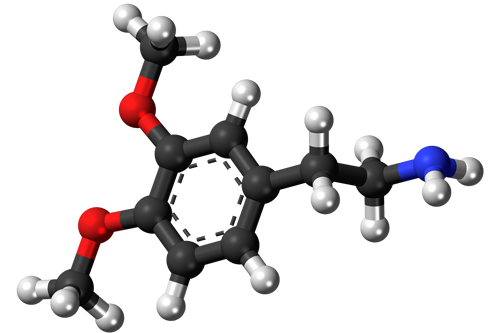I’m not sure when the use of poppy for the relief of pain was made illegal for herbalists, but it certainly is. In fact, in California one can be cited and made to uproot and discard any poppy plants that are even remotely suspected as being used for medicinal purposes. It is certainly clear why this is the case; the latex of the poppy plant has a long history of addictive abuse both in China and later in its extracted and refined form today as morphine and heroin.
However, herbalists are finding other members of the Papaveraceae family to have similarly powerful analgesic pain-relieving properties. Even California poppy, today one of the most popular herbs sold for insomnia in Europe, has somnolescent and mild analgesic properties.
Recently, a study appearing in the January 20,2014 issue of Current Biology and conducted by a team of researchers together with Chinese herbal practitioners at the University of Irvine in California found yet another member of the Papaveraceae family, Corydalis yanhusuo, to also be an effective non-addictive analgesic for both acute inflammatory and nerve pain. (Image of Corydalis yanhusuo at right from http://www.itmonline.org/arts/pain.htm)
Tests were done on rodents who had induced inflammatory pain associated with tissue damage and infiltration of immune cells, and injury-induced neuropathic pain. The latter is particularly important because evidently Western medicine has no adequate treatments for neuropathic pain. This makes corydalis at least the second and arguably the most powerful herb one can use for the treatment of pain (the other herb commonly used by Western herbalists for nerve pain is St. John’s wort, or Hypericum perfoliatum).
The teams screened 10 traditional Chinese medicines known as analgesics and nearly 500 compounds known for their pain-relieving abilities. Only dehydrocorybulbine (DHCB), the constituent found in Corydalis yanhusuo, produced a reproducible effect. Unlike poppy and its biochemical derivatives, DHCB does not necessitate the raising of doses with its subsequent addiction as do other conventional pain relievers. This is the first time that the coordinated efforts of both Chinese medical doctors and researchers East and West have been able to extract, identify and test a specific biochemical constituent that seems largely responsible for the remarkable analgesic properties of this medicinal herb.
These are several species of corydalis throughout the world, and indeed many of these may have the same or even greater analgesic properties, but the one most used in Traditional Chinese Medicine (TCM) for thousands of years grows in Siberia, Northern China and Japan. Corydalis yanhusuo is one of the herbs most frequently used by Chinese herbalists for the treatment of pain and various other circulatory problems. As such, it is also used for the treatment of cancer and coronary heart disease. It is classified as a powerful Blood-moving herb, which relieves the stasis that causes pain according to TCM theory. The root is administered in 4.5 to 9 grams per dose in a divided decoction, taken twice daily to alleviate menstrual cramps, chest pain and abdominal pain. According to Olivier Civelli, chief researcher at UCSC Irvine, more than 50 million Americans are affected by neuropathic pain, for which DCBH could be of great benefit. These people could receive the relief they need through this powerful herb.
As an aside, marijuana-infused oil or ointment (made with lard) is a traditional Central American folk use of the herb for the relief of arthritis, sprains and other aches and pains. Increasingly with the legalization of marijuana in some states, its use for pain has been widely acclaimed as medicine-makers produce their novel pain-killing marijuana ointments and tinctures. But remember, herbal formulas are usually (though not always) more effective than single herbs. A good formulation would be a combination of cannabis with corydalis.


Hi!!
My wife and I have recently purchased Yan Hu Suo granules (4:1) to try to alleviate pain. Julie has fibromyalgia. As for me, well I have had 4 back surgeries. Hey, we were skeptical, but it works! We both agree it decreases our “background pain” and helps us fall and stay asleep. We are interested in buying some seeds or plants – we searched the net, and could not find a source – could you point us in the right direction?
Thanks very much, Garry Mercaldi
Hi 🙂
I have neuropatic pain + inflamatory, which gaves me chronic pain for 2 years now
my Narcotic is making me sick, but the pain is too hard to handle without them.
I need this medecine.
Where do I get it.
I haven’t found the real medecine of it yet and im getting desperate.
Do you have a real ressource where I can buy it:
dehydrocorybulbine (DHCB) from the roots of the Corydalis yanhusuo plant
Thanks
I suffer from chronic pain, as does my mother & 2 sisters.
Will you please send me a free sample of Corydalis granules to try.
I am hoping it helps.
Thank you,
Michele Curtiss
4620 W. 107th Street
Oak Lawn, IL 60453
I have extreme neuropathtic pain and had it for 8 years now and I take 200mg 3 times a day and I was hoping that you provide me with a web-link for Corydalis Yanhusuo Seeds, or the Plant so I can grow the item, I’ve several searches but have beeb unable to find someone who seel the seeds. Thank you!
I had a backfusions 16 years ago and in constant pain. I have nerve damage in my legs and constant main with muscle spasms with out relief. Where can I purchase the gradual formular?
I am interested in trying the corydalis for spinal stenosis, pinched nerve and getting ready for a left total knee replacement. I believe in using natural supplements as I have been using them for years . I am also a 23 year Lyme disease survivor and I know about pain. Any insights will be greatly appreciated?